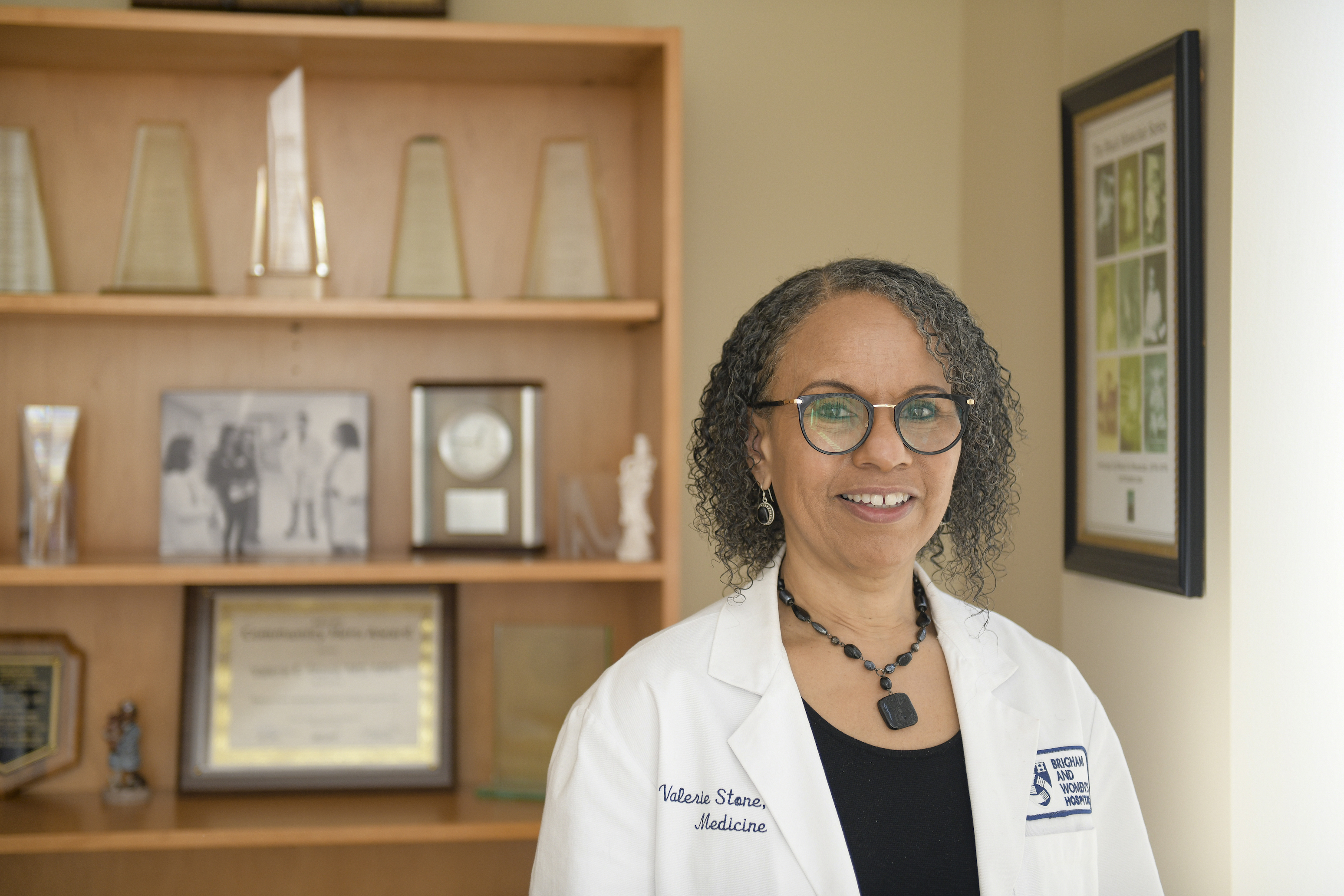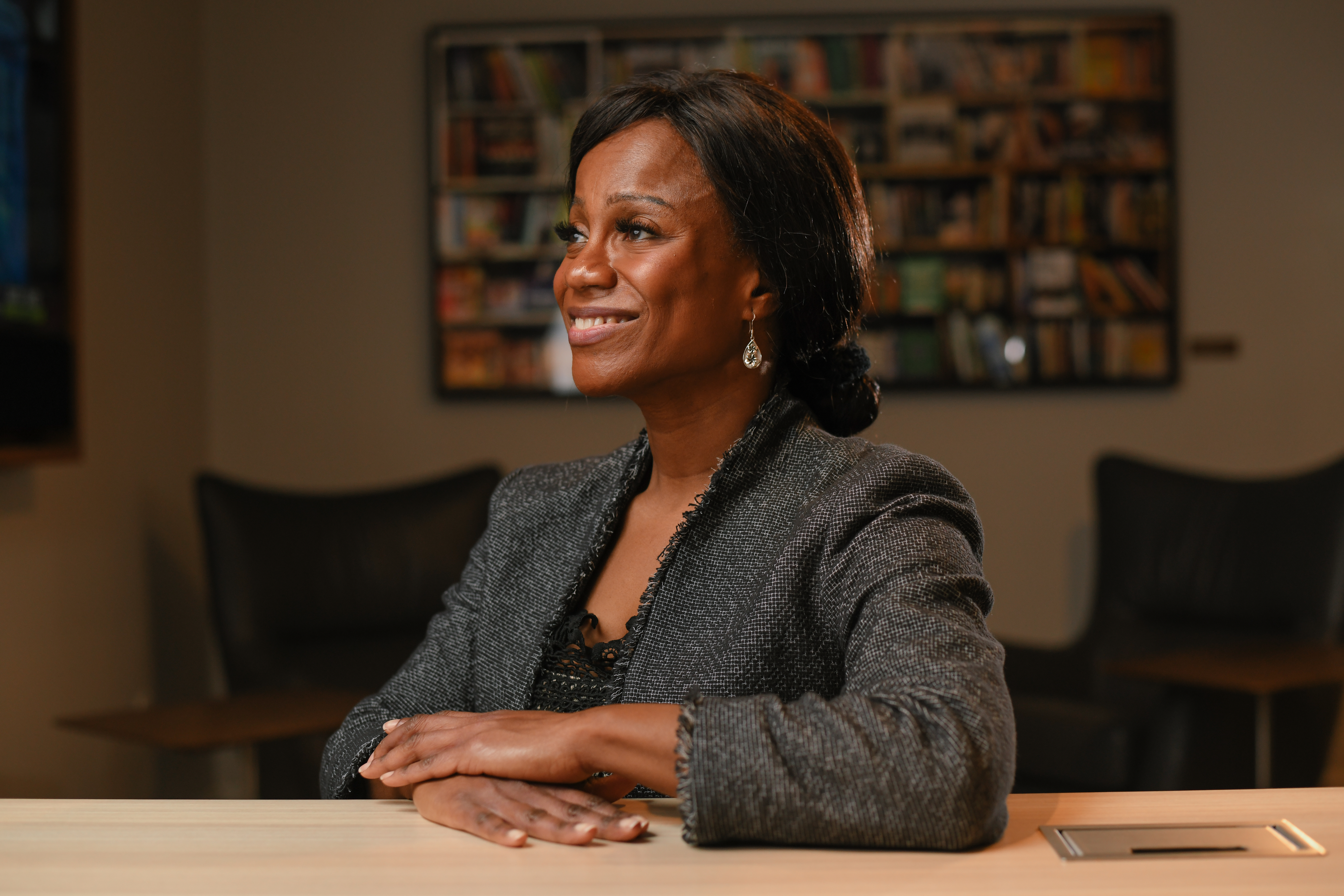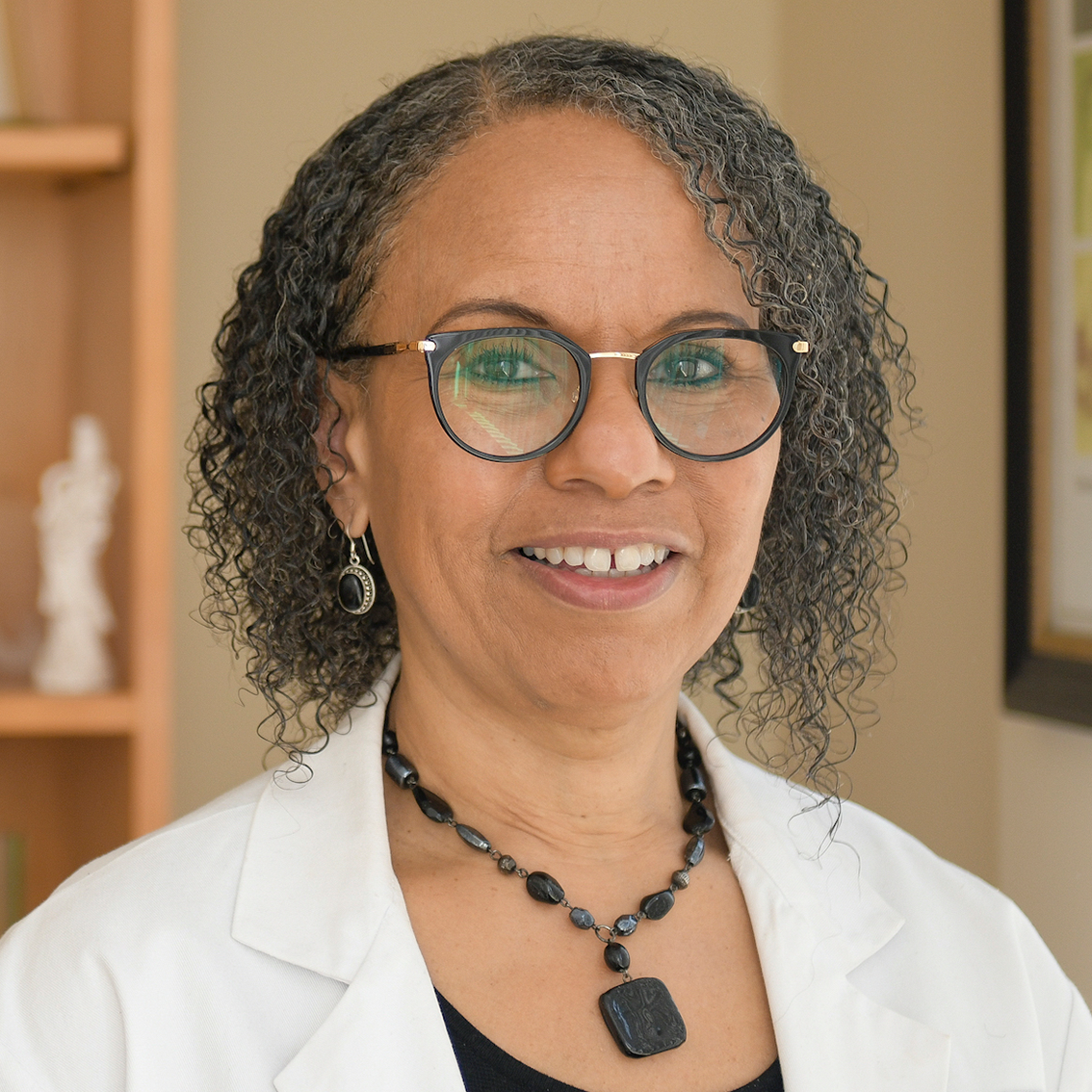Apr 26, 2022
‘The difference between life and death’
Coverage is proud to publish columns featuring the perspectives of Black women physicians who belong to the Diva Docs network in Greater Boston. Today, Dr. Valerie Stone — nationally recognized expert on HIV/AIDS, vice-chair for Diversity, Equity and Inclusion at Brigham and Women’s Hospital, and first African American to become a professor of medicine at Harvard Medical School — shares her thoughts with Dr. Philomena Asante, leader of Diva Docs Boston, founder of the Diva Docs Black Women MD Network and creator of the award-winning Diva Docs series for Coverage.
When I was a child, my father, a detective for the prosecutor in Newark, N.J., sized up my aptitude for calculus and chemistry, and talent for puzzles and brain-teasers, and declared, “This is the mind of a future lawyer!”
But any aspirations I had for the courtroom were set aside when I was 13 and my grandmother became extremely ill. Ignored by her doctors, she rapidly declined. When they finally paid attention to her symptoms, it was too late. She would die a painful death due to widely metastatic cancer just 10 days after being diagnosed.
It was then that I understood that being a poor Black woman could mean the difference between life and death. It seemed my grandmother was invisible and unimportant. I realized that better medical care would have extended my grandmother’s life and eased her pain.
Looking around me, I saw the tragedy that so devastated my family was repeated time and again as health disparities took the relatives of my friends one by one.
I saw that a career in law would not have saved her, but a doctor who truly cared about her, and saw her life as valuable, might have.
That was the point at which I decided I would become a doctor, not just to take good care of patients, but to work to make sure there were fewer women and Black people who experienced health care inequities that resulted in such loss.

Addressing inequities in medical care
For nearly 40 years, I have been doing all I can to improve health equity – through the care I provide as a physician, the education I provide to residents and medical students, and the work I do as a health care leader. Currently, as director of health equity initiatives in the department of medicine at Brigham and Women's Hospital, I am working with our team of leaders to identify inequities and implement initiatives to address them.
Health care inequities occur when doctors or the health care system fail to give patients appropriate care -- for example, by failing to provide indicated screenings, creating delays in diagnosis, delays in treatment, or failing to provide indicated treatment.
Clinicians operate under standards of care that, very simply, establish that if you have a certain problem, you should get a certain medication. Historically, we have found minority patients are less likely to receive indicated medications for their medical problems. We see this across a wide range of issues -- in HIV AIDS, heart disease, cancer, even atrial fibrillation. We call this issue “pharmacoequity”: equal opportunity to get the right medications.
We also see inequities in procedures. For example, study after study has shown that when Black patients present with symptoms of myocardial infarction or acute coronary syndromes, they’re less likely to get a cardiac catheterization or other appropriate interventions.
And inequities can be seen when patients aren’t provided the appropriate “level of care” – for instance, if they are cared for in a regular hospital ward when they should be in the intensive care unit. Recently, at the Brigham, we did a study that found patients were less likely to be admitted to our heart failure service if they were Black, Latinx, or women.
How did we address this inequity? One tactic we are using is a best practice advisory in our electronic medical record, so if there’s an admission for heart failure, an alert will pop up saying, “This patient should go to the Heart Failure Service. Is there any reason they shouldn’t go to the Heart Failure Service?” These sorts of advisories, which remind doctors to do the same thing for every patient, are quite valuable, and enable us to effectively combat inequities.
The importance of a primary care provider
While we are working to ensure that every patient gets the type of care they deserve, patients can also help ensure they are getting equitable, high-quality care by finding a primary care provider they respect and trust.
Everyone needs a doctor who is in charge of their care, an outstanding PCP who is there for the long-term to provide preventive care, guidance and support. You want someone who is a gifted diagnostician, able to figure out the puzzle of what’s going on by asking great questions, knowing the right tests to do, someone who listens to you and is compassionate and caring.

Finding the right PCP for you
Talk to friends, family members, and trusted colleagues, about whether they like their PCP, and if so, what do they like about them? That may include discussing whether the doctor has patients who look like you, whether they seem like they’re comfortable with people who are culturally diverse.
You want a primary care doctor with strong interpersonal skills, the ability to connect and include you in decision-making.
Research potential primary care doctors so you know what kind of training they’ve had, how long they’ve been in their current position, what medical school they went to, and where and what kind of training they had after medical school.
For patients who have serious medical problems that often require hospitalization, it may make sense to choose a primary care practice onsite at an academic medical center. For everyone else, a range of options are available. Choose someplace that’s close to home, whether that’s in a community health center, a hospital-affiliated practice, or a private practice.
Every patient should expect that their doctor will figure out what’s going on, and that they’ll explain it in a way that is understandable. When necessary, a PCP should be able to rapidly take next steps such as targeted blood tests, diagnostic studies, or a referral to a specialist. If your doctor makes a referral or says, “I’m going to order this study, and I’ll be back in touch with the results,” they should follow through. If you’re having a health issue, and the tests they do the first time around don’t show anything, they should be very clear about next steps.
If your doctor isn’t doing that, you can let them know about your concerns: “I came to you because I have this problem. You told me all the tests were negative, but I’m still feeling poorly. I need to understand what’s going on.” A lot of people are intimidated by the power dynamic with doctors and may feel hesitant, but patients have the right to say this, and they should. If your doctor isn’t responsive, it may be time to consider making a change. You can talk to the medical director or administrator of the practice and say, “I’ve been seeing Dr. X, and they didn’t get back to me. I’m wondering if I can switch to Dr. Y because I’ve heard good things about them.” This is your right as a patient.
A journey to improve medicine
I worked hard to become the kind of doctor patients can count on, and I’ve been guided by mentors and a network of colleagues along the way.
That started with my mother, an educator whose focus was enhancing Black children’s academic achievement. She turned 100 this spring, and she’s been my mentor my entire life. She always told me I could do anything I wanted to do. Her belief in me instilled an unshakable self-confidence, and a belief that with hard work and perseverance, I could reach my goals.
When I was a medical student at Yale, mentors who learned of my commitment to improving care for women and minorities advised me to become a leader in an academic medical center, because large medical centers like the Brigham care for thousands of patients and influence the care and health outcomes of entire communities. Given that advice, I set out to build a career as a leader at an academic medical center like the one I have today.

Changing the culture
As a patient, it is reassuring to walk into a hospital or medical practice and see staff, physicians, and nurses that look like oneself. It also changes the culture. This effort has been a major part of my work as vice chair for diversity, equity, and inclusion in the department of medicine at the Brigham. It requires committed leadership, resources, and a dedicated leader who has time, expertise, and accountability for reaching these important goals.
We’ve done a tremendous amount of diversity and inclusion training and racial justice training to make our faculty aware of the history of race-based disparities in care, and the things that each of us can do to make a difference.
In addition, we put energy into recruitment of diverse trainees and faculty. This requires, in some cases, making sure that we have unconscious bias training for everyone involved in the screening and interviewing of applicants. It also means that we think deeply about what qualities we’re valuing as we rank applicants for residency and select candidates for faculty positions.
Finally, as new clinicians come to us, we want to create an environment where everyone feels like they belong, so we build community among the faculty and trainees of color and make sure they feel like they have a safe space in terms of mentors and colleagues.
You create a culture shift by prioritizing what you value and putting resources behind it.
That means senior faculty and hospital leadership who are saying, “This is our priority.” Through our efforts, we have increased the diversity of the doctors in our department at the Brigham. Now over 100 of our faculty physicians are Black, Latinx or Indigenous. We are proud of this progress, and pleased that more patients can see doctors that “look like them.” Yet there is much more to be done. Approaching this work with enthusiasm, optimism and a commitment to move the needle every day, I am confident we will continue our progress.
Did you find this article informative?
All Coverage content can be reprinted for free.
Read more here.
PHOTOS OF DR. VALERIE STONE BY FAITH NINIVAGGI

